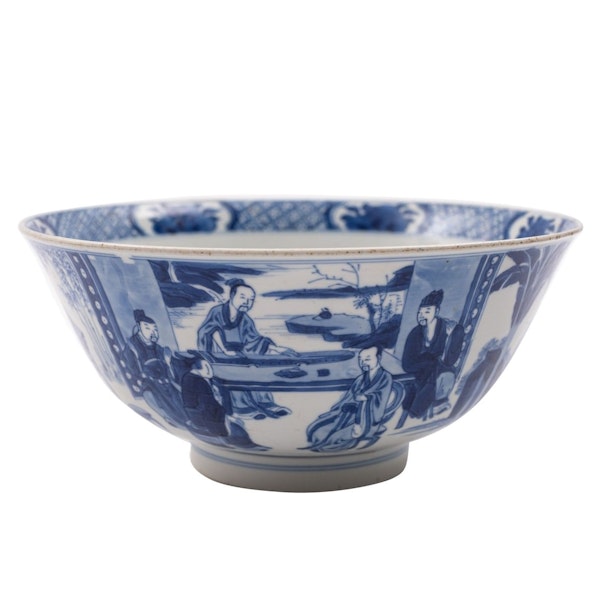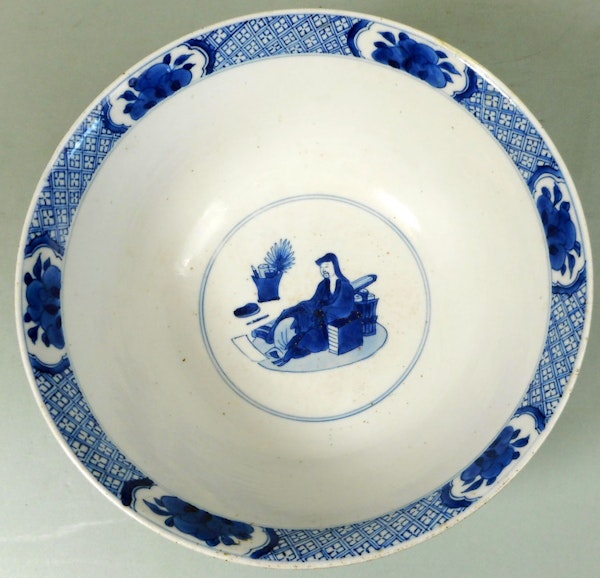Chinese blue and white bowl, Kangxi (1662-1722)
Chinese blue and white bowl, Kangxi (1662-1722)
POA
Description
Chinese blue and white bowl, Kangxi (1662-1722), with slightly everted rim and raised upon a tall foot; the exterior finely painted with a continuous scene of four groups of scholars gathered on a garden terrace engaging in various literati pursuits: playing the guqin against a background watery landscape scene, playing a game of weiqi, examining a scroll painting and practicing calligraphy together, all amongst bamboo, plantain and rockwork; the interior rim decorated with six lobed cartouches containing peaches and foliage against a band of diaper ground, the well with a central roundel containing a scholar reclining amongst objects including scrolls, a guqin, pen and inkstone, the base with apocryphal Chenghua mark within a double circle.
Dimensions:
Diameter: 20.5cm. (8 1/16in.)
Condition:
Small filled rim chip
Notes:
Known collectively as 琴棋書畫 (qinqishuhua), the four pursuits represented on this bowl were artistic talents required of the aristocratic scholarly gentleman. The concept dates back to at least the mid Tang; the earliest extant source discussing the four combined arts is the 9th century work 法書要錄 (Fashu Yaolu, ‘Records of Calligraphy’) by Zhang Yanyuan, a high-ranking calligrapher and art historian. The pursuits are playing the guqin (琴, qin), the strategy game weiqi (棋, qi), calligraphy (書, shu) and painting (畫, hua). Such creative endeavours were associated with the literati scholars of ancient China, who, free from the confines of artistic schools and court life, considered themselves ideal observers of the workings of moral law in nature. From the Yuan dynasty onwards, many educated Chinese retreated to the mountains and sought self-cultivation through immersion in arts, away from the Mongol government. Composing poetry and painting subjects inspired directly by personal experience of nature, their practices emphasised the creative process itself. During the political upheaval of the late Ming and early Qing, literati-themed wares such as this bowl became popular, as the notions of traditional value and stability associated with the ancient scholars offered a connection to an idealised past. Encouraged by the Emperor’s own personal dedication to literati pursuits, Kangxi collectors valued wares that embodied the scholarly aesthetic and demonstrated their elevated intellectual and social status.
| item details | |
|---|---|
| Material and Technique | Porcelain with underglaze cobalt blue decoration |
| Origin | Chinese |
| Period | 18th Century |
| Condition | Excellent |
| Diameter | 20.5cm. (8 1/16in.) |
Product REF: W785




